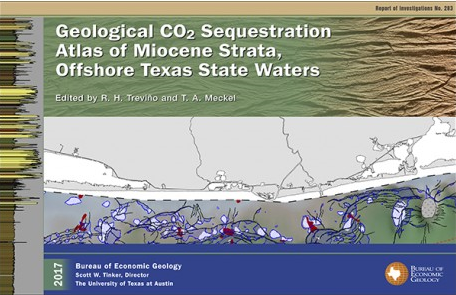Pressure Space
Shifting a Paradigm: Assessing Pressure Space for CCS Projects
Principal Investigators: Alex Bump & Sue Hovorka
For the carbon capture and storage (CCS) industry, we suggest that pressure space—the mathematical product of accessible pore volume and allowable pressure increase—is the key subsurface commodity.
2024–Present Project Overview
CCS practices, and regulations, commonly focus on CO2 plumes and the pore space taken up by plumes:
- Applications for carbon storage permits, for example, require that the ultimate extent of CO2 plumes are defined and that the growth and movement are also monitored through time.
- Storage project developers are required to lease the pore space to be occupied by CO2, often leading to plans to fill the leased pore space right up to the lease lines.
There is nothing wrong with either of those. However, injecting CO2 requires displacement of the native pore fluids (usually brine). Brine displacement may be limited by reservoir injectivity and it is always limited by the extent of porous and permeable strata. Seals, geopressure, and statutory prohibitions on contamination of freshwater aquifers and surface environments limit vertical brine displacement. Similarly, sealing faults, stratal pinchouts and basin edges limit lateral displacement. Dissolution and reservoir inflation may help, but the effects are small. Ultimately, most storage capacity is generated by compression of pre-existing brine and rock, accompanied by rising pressure. By analogy, you might compare subsurface reservoirs to a standard gas storage tank—capacity depends on both volume and pressure rating.
This work offers a way to create pressure-limited resource maps, a marked improvement on the historic “static capacity” maps that considered only pore volume and saturation, assuming that brine could be displaced without limits. As such, this work is a complement to EASiTool. Where the latter assumes an isotropic reservoir and calculates pressure-limited injection through time, our work allows spatially variable geologic properties and asks simply, how much storage would you get if you pressured it all up?
Learn More
Summary of Project Successes
Bump, A. P., and Hovorka, S. D., 2024, Pressure space: The key subsurface commodity for CCS: International Journal of Greenhouse Gas Control, v. 136, 104174, https://doi.org/10.1016/j.ijggc.2024.104174.
Last Updated: April 8, 2025



